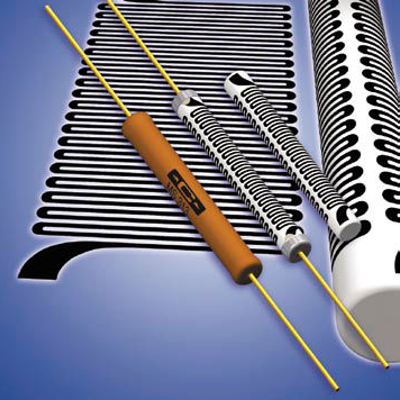thin film resistor
Thin film resistors consist of a carrier substrate such as silicon, gallium arsenide( GaAs) or aluminum, on which an extremely thin resistor layer, only a few hundred angstroms thick, is deposited.
Tantalum nitrate (TaN) is used as the resistive layer. The resistive layer is covered with a conductive layer. By photolithographic means, the supporting substrate is divided into a specific grid and the two layers, the resistive layer and the conductive layer, are fabricated independently in size. The thickness of these layers range from 50 to 250 angstroms (Å); where one angstrom is equivalent to 100 pm (picometer) or 0.1 nm (nanometer). The resistance value of these film resistors is derived from the cross-section of the resistive material and its resistivity.
Resistance ranges for thin film resistors are relatively limited, ranging from 5 ohms/cm2 to 250 ohms/cm2. Important characteristics for thin-film resistors include temperature coefficient, which for precision thin-film resistors is about 5 ppm/°C, stability of resistance value after 2,000 hours is 0.05%, and electrostatic discharge( ESD) resistance is 2,500 V.
Because thin-film resistors can change in resistance values over time, due to oxidation of the substrate material, the resistor material is bonded to the carrier substrate at a temperature of about 400 °C.
Thin film resistors have higher production costs than thick film resistors.

